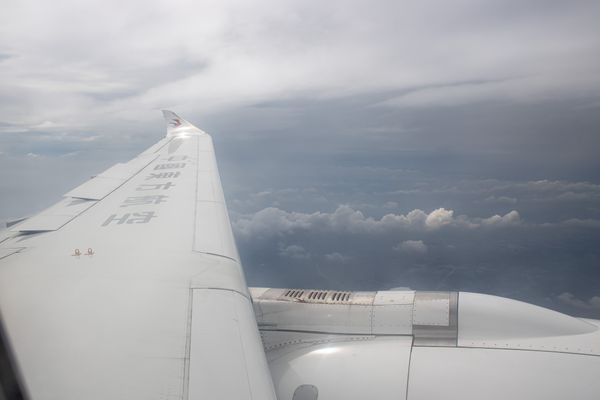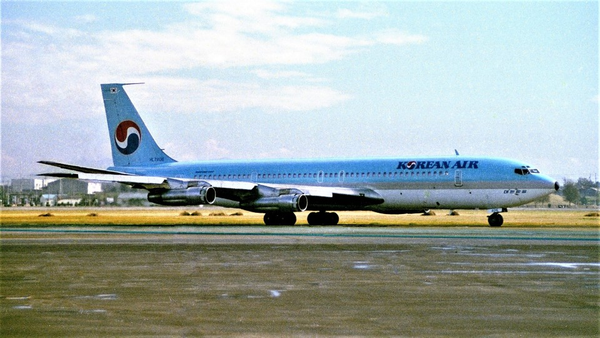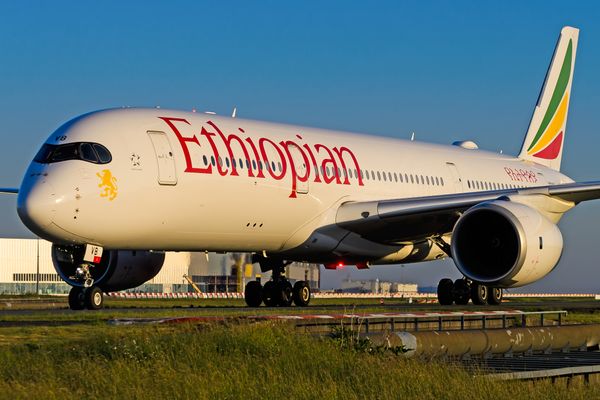One of the few remaining Boeing 737-200 operators is set to retire the aircraft. Canadian airline Air Inuit announced a deal to acquire three Boeing 737-800 aircraft, replacing the iconic Boeing 737-200. For aviation enthusiasts, Air Inuit is one of the only opportunities in the world to fly and spot the iconic Boeing 737-200.
The replacement of the Boeing 737-200 will take approximately 24 months, as the Boeing 737-800s acquired will be converted to “combi” aircraft. These conversions will take place at KF Aerospace in Kelowna, B.C., per CargoFacts, where Boeing opened two Boeing 737 conversion lines in 2021. A supplemental type certificate will need to be developed for the Boeing 737-800 combi.

The Boeing 737-800 combi aircraft will be the only modern commercial combi aircraft, a combination of passenger capability and cargo capability for an airline. The U.S. Navy is the only other entity to operate modern combi aircraft, with the Boeing 737-700 combi and C-40 Clipper.
The ability to carry cargo is critical for Air Inuit since it serves several smaller regional and isolated communities in Canada that rely on the cargo service. Specifically, Air Inuit was founded to serve the Inuit communities of Nunavik and connect them with larger cities such as Montreal and Quebec.
The Boeing 737-200 is unique as it allows for gravel airfield operations via its gravel kit option in addition to the aircraft's short-field capabilities. The Boeing 737-200's gravel kit includes a nose gear gravel deflector, preventing gravel from damaging the underside of the aircraft. In addition, vortex dissipators under the engine ensure that vortices do not form which can cause gravel to be ingested into the engines.
In Northern Canada, some airports feature unpaved runways, which is where the Boeing 737-200 steps in. Air Inuit will work with interested stakeholders to upgrade Nunavik's airfields for the Boeing 737-800 combi. Discussions are still underway for investment at those airports. Puvirnituq, Quebec is the only airport that Air Inuit operates at with a Boeing 737 that only has a gravel runway for operations.
In a statement, Christian Busch, President and CEO of Air Inuit stated, "Adding these aircraft to our fleet will enhance our efficiency in transporting passengers and delivering essential cargo to the communities we serve."
He adds, "These modern devices also contribute to the reduction of greenhouse gas emissions, an objective that the company has set itself to contribute to the fight against climate change." The airline expects carbon emissions to drop by 40 percent by using the Boeing 737-800.

Currently, Air Inuit operates four Boeing 737-200C aircraft, per Planespotters.net. The average age of these aircraft is 43.4 years old. The airline also operates a Boeing 737-300C, as well as 15 Dash 8-Q300 aircraft. The smaller Dash 8 aircraft help serve smaller Inuit communities within Nunavik. Only one of the 15 Dash 8-Q300 aircraft is primarily for cargo operations.
Several other airlines in Canada like Chrono Aviation and Nolinor Aviation still utilize the Boeing 737-200, primarily for charter operations. A similar Canadian carrier that primarily focuses on smaller regional communities, Canadian North, retired its last Boeing 737-200 earlier this year.
The Boeing 737-200 is part of the original Boeing 737 family in addition to the Boeing 737-100. United Airlines launched the concept in 1965 as an extended fuselage of the Boeing 737-100. It entered service for United Airlines in 1968. Deliveries ended in 1988 with Xiamen Airlines. These initial fleet types helped kickstart one of the most successful aviation fleets in history: the Boeing 737.
For aviation enthusiasts, the best place to catch a glimpse of Air Inuit is Montreal's Pierre-Elliot Trudeau International Airport (YUL), where Air Inuit's Boeing 737-200s are based. Montreal's other regional airports also provide opportunities to catch Nolinor or Chrono Aviation's operations.
US Air Force to Launch New Experimental One-Way Attack Drone Unit » HEKLA: Icelandair Retires Hekla Aurora After 31 Years in the Skies » Air France Suspends Paris-Manila Service for Summer 2026 »
Comments (0)
Add Your Comment
SHARE
TAGS
NEWS Air Inuit Boeing 737-200 Boeing 737 737 737-200 Boeing 737-800 737-800RECENTLY PUBLISHED
 VIDEO: What It's Like Onboard China's COMAC C919
We flew onboard China Eastern's COMAC C919 to experience China's homegrown narrow-body up close. From seat comfort to cabin layout to noise levels to tech: how does it really compare with the Boeing 737 and Airbus A320? This review puts all three workhorses under the same spotlight.
TRIP REPORTS
READ MORE »
VIDEO: What It's Like Onboard China's COMAC C919
We flew onboard China Eastern's COMAC C919 to experience China's homegrown narrow-body up close. From seat comfort to cabin layout to noise levels to tech: how does it really compare with the Boeing 737 and Airbus A320? This review puts all three workhorses under the same spotlight.
TRIP REPORTS
READ MORE »
 KAL858: The North Korean Bombing that Shocked the World
Among the 99 passengers boarding Korean Air Flight 858 on November 29, 1987, few could imagine their journey would end as one of aviation's darkest mysteries.
STORIES
READ MORE »
KAL858: The North Korean Bombing that Shocked the World
Among the 99 passengers boarding Korean Air Flight 858 on November 29, 1987, few could imagine their journey would end as one of aviation's darkest mysteries.
STORIES
READ MORE »
 Ghost Networks: The Rise, Fall, and Revival of Fifth-Freedom Flights
Fifth-freedom flights — routes where an airline flies between two countries outside its home base — have always lived in aviation's twilight zone. We chart their rise, their near-disappearance, and the surprising markets where they still thrive today. Then we take you on board a special Seoul-Tokyo fifth-freedom flight to show how the experience stacks up against a typical regional carrier.
TRIP REPORTS
READ MORE »
Ghost Networks: The Rise, Fall, and Revival of Fifth-Freedom Flights
Fifth-freedom flights — routes where an airline flies between two countries outside its home base — have always lived in aviation's twilight zone. We chart their rise, their near-disappearance, and the surprising markets where they still thrive today. Then we take you on board a special Seoul-Tokyo fifth-freedom flight to show how the experience stacks up against a typical regional carrier.
TRIP REPORTS
READ MORE »



